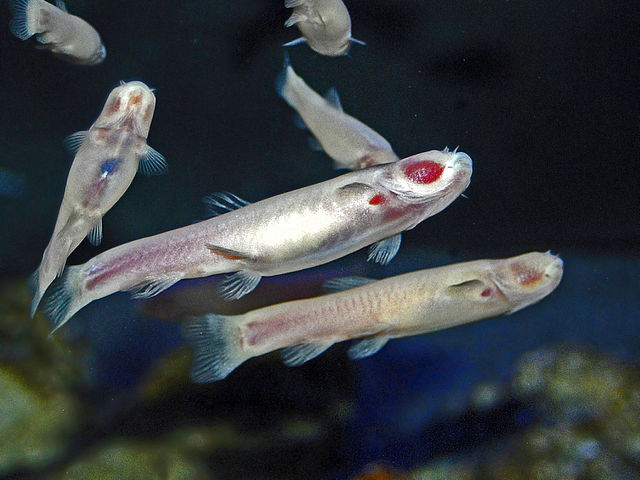The Amblyopsidae are a fish family commonly referred to as cavefish, blindfish, or swampfish. They are small freshwater fish found in the dark environments of caves, springs and swamps in the eastern half of the United States. Like other troglobites, most amblyopsids exhibit adaptations to these dark environments, including the lack of functional eyes and the absence of pigmentation. More than 200 species of cavefishes are known, but only six of these are in the family Amblyopsidae. One of these, Forbesichthys agassizii, spends time both underground and aboveground. A seventh species in this family, Chologaster cornuta, is not a cave-dweller but lives in aboveground swamps.
Amblyopsidae
Cavefish or cave fish is a generic term for fresh and brackish water fish adapted to life in caves and other underground habitats. Related terms are subterranean fish, troglomorphic fish, troglobitic fish, stygobitic fish, phreatic fish, and hypogean fish.
Phreatichthys andruzzii showing the pale colour and lack of eyes typical of cavefish. The large red spot on the head is the blood-filled gills, visible through the semi-transparent gill cover
As typical of cavefish, Typhleotris madagascariensis is an opportunistic feeder on various invertebrates
The waterfall climbing cavefish has several adaptions that allow it to climb and "walk" in a tetrapod-like fashion
The Mexican blind brotula and other cave-dwelling brotulas are among the few species that live in anchialine habitats





